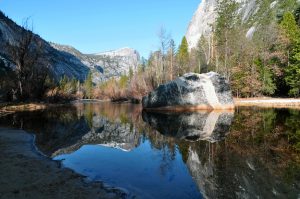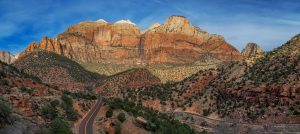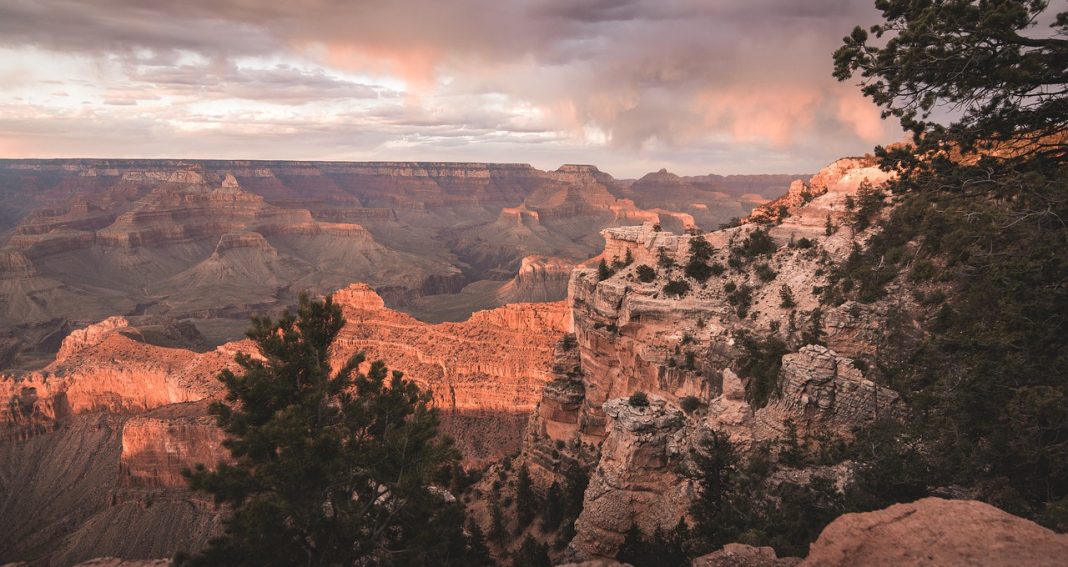Yosemite National Park – America’s first national park.
The Yosemite National Park stretches across the western slopes of the Sierra Nevada mountain chain, covering an area of more than 750,000 acres. Most of the park is a designated wilderness with amazing granite cliffs, streams, waterfalls and giant sequoia groves. Designated a World Heritage Site in 1984, most visitors spend their time at the park in the Yosemite Valley which covers seven square miles of the park. The park has five vegetation zones – lower montane, upper montane, chaparral and oak woodland, alpine and sub-alpine.

Grand Canyon – Natural wonder of the world
Stretching for 277 miles the Grand Canyon is a steep-sided canyon carved by the Colorado River in Arizona. This natural wonder often reaches widths of 18 miles at a depth of over a mile. The area was originally inhabited by Native Americans who lived in caves and settlements built in the canyon. The Grand Canyon became a protected Forest Reserve in 1893 and later became a National Park in 1919, three years after the creation of the National Park Service. Visiting the Grand Canyon West Rim is a great opportunity to walk along the ‘Grand Canyon Skywalk’ 4,000 feet above the ground and look down through 2.5 inches of glass to the canyon below, take a white rafting tour and watch traditional performances by Hualapai tribe people. For a more vertical perspective an ideal way to see the canyon is by helicopter.

Zion National Park – Mormon’s ‘promised land’
Surrounded by towering cliffs, the Zion National Park is located in Springdale Utah. A major feature of the park is Zion Canyon which cuts through the Vavajo Sandstone at depths of up to half a mile and stretches for 15 miles. The park has four life zones – desert, riparian, woodland and coniferous forest which are home to many species of plant, birds, mammals and reptiles. Originally inhabited by an agricultural community, the park now welcomes visitors to share its mountains, canyons, rivers and facilities like climbing, hiking, canyoneering, cycling and horse riding.
Bryce Canyon National Park – Incredible rock formations of Utah
Designated a National Park in 1928, Bryce Canyon covers 56 square miles in south-western Utah. The canyon itself is in fact a giant natural amphitheatre which was formed by the erosion of the Paunsaugunt Plateau. Visitors will be amazed by the geological structures (hoodoos) formed by wind, rain and ice erosion of the river and lake bed sedimentary rocks. These red, orange and white rock formations offer amazing viewing and photographic opportunities. Mormon pioneers settled in the area in the 1850s, naming it after Ebenezer Bryce who made Bryce his home in 1874.

Monument Valley – Navajo Nation Reservation
Monument Valley is part of the Colorado Plateau and lies within the Navajo Nation Reservation. The clusters of sandstone buttes, some reaching 1,000 ft from the valley floor, have been created by the rivers that run through the valley. From the visitor centre you can see the Mitten buttes and Merrick Butte or you can take a jeep tour through the valley and marvel at such landmarks as the Ear of the Wind and other amazing sights. Whilst visiting Monument Valley why not enjoy a meal at the Haskenneini Restaurant which serves both native Navajo and American cuisine.
The above are just a sample of the many natural attractions on offer in America. Take advantage of one of the many late deals to the USA which are on offer throughout the internet and visit some of these amazing sights.
